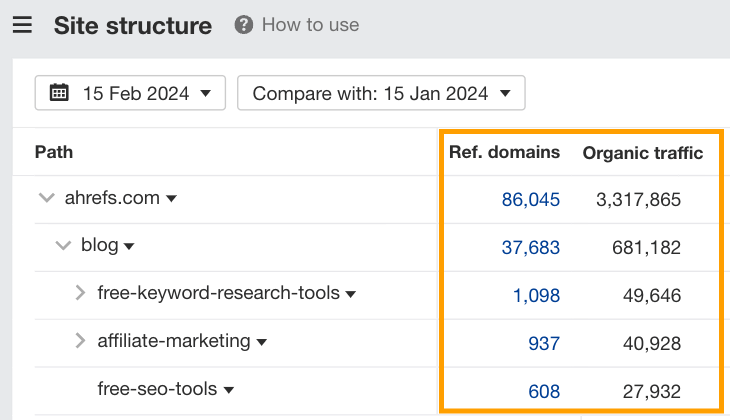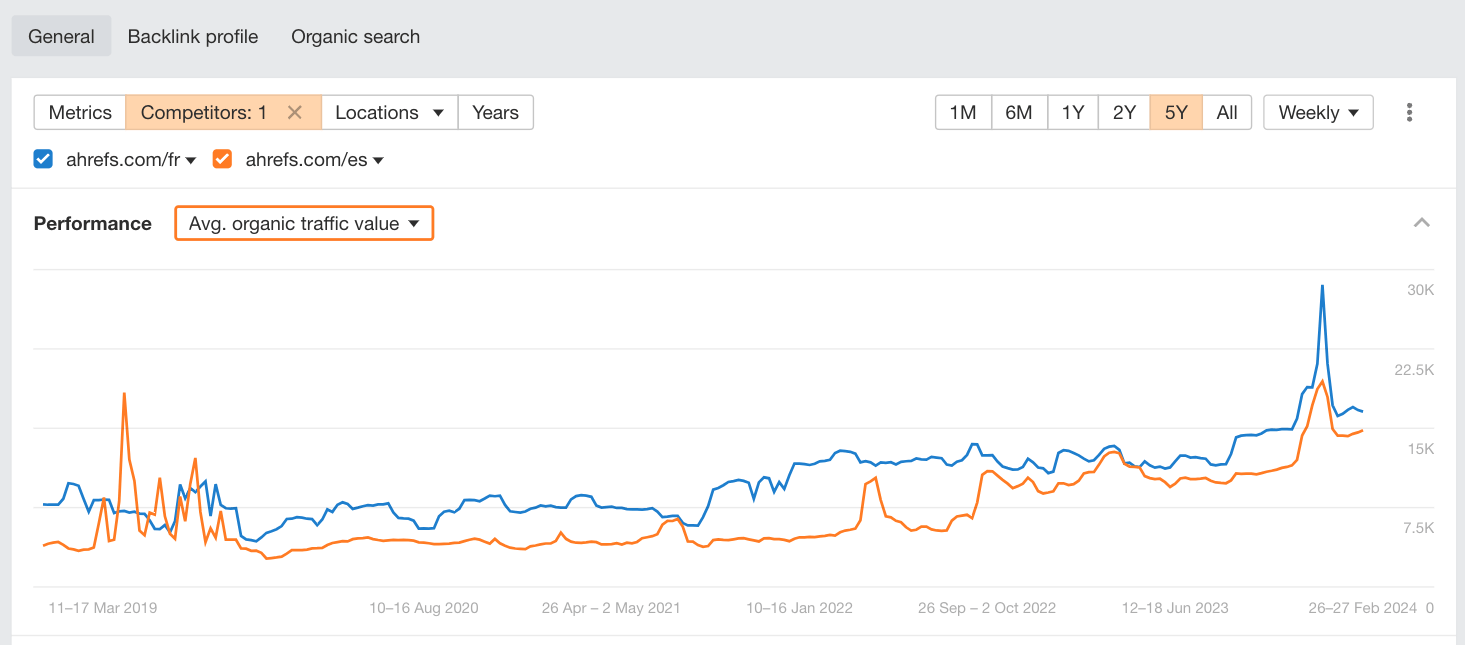How to Get SEO Buy-In: 7 Actionable Tips


For many SEOs in agency, in-house, or enterprise roles, 20% of their job is actually doing SEO, the other 80% is about soft skills like getting buy-in.
I always say that 20% of my job is actually doing the SEO, and 80% of communicating, getting buy-in, and moving the boulder so that can succeed
At Ahrefs, multiple team members have worked in these roles, so we’ve compiled a list of our top tips to help you get more buy-in for SEO projects.
1. Find decision-makers: Discover who calls the shots
They can each help you implement small parts of SEO that together can be a sizable contribution to the overall SEO strategy. They can also support your requests for funding or initiatives you pitch to executives later on.
To build relationships with decision-makers in these teams, consider the following:
- Who’s in charge of budgets and projects? → Learn what they’re working on and how you can help each other with specific projects.- What do they care about? → This is the “what’s in it for me” factor. Align your SEO recommendations and requests to these things.
- How can they help implement your SEO recommendations? → Identify the 20% of SEO they can easily help with using current resources.
- Delivers a confusing brand experience
- Impacts customers (humans and bots)
- Impacts other channels, like SEM
- Errors as high-priority
- Warnings as medium-priority
- Notices as low-priority
- Entering international markets
- Becoming the market leader
- Expanding X division
You get the idea.
Here are the tactics we’ve found that help position SEO as strategically valuable.
Compare against competitorsThis tactic has a very high success rate in our team’s experience. When ideating this blog post, Tim, Patrick, Chris, and Mateusz all cited great success with this approach, and my own experiences echo this.
It works for literally any SEO activity you’re pitching, especially if you’re in a fierce market with SEO-savvy competitors who are already doing the thing you’re recommending.
For example, you could try the following different pitch angles:
→ Closing the gap: “If we did X, we’d be able to close these gaps with our biggest competitor in Y months…”
→ Reverse engineering: “Our biggest competitor did X. If we dedicated Y resources, we could close the gap and outpace them within Z months.”
→ Becoming a pacesetter: “There’s a gap in the market and none of our competitors are leveraging it. X resources would allow us to take Y actions that give us a competitive edge and make it difficult for competitors to catch up.”
No matter your angle, an easy place to start is in Ahrefs’ Site Structure report. Here, you can see what strategies your competitors are using along with high-level performance metrics, like organic traffic and the number of referring domains that different website segments get.
 Compare against internal departments
Compare against internal departmentsAnother great approach is to bring your pitch back to what’s going on in other areas of the organization.
This is a great tactic to benchmark the value of SEO in a way that is immediately apparent. It’s also a great way to get easy buy-in if your company’s strategic objectives focus on specific divisions or products.
Here are some pitching angles you can try:
→ Expanding a division: “We need X resources to help division A expand to the level of division B.”
→ Improving KPIs: “Product A has a high cost per acquisition. We were able to lower CPA by X% for product B using SEO. If we had access to Y resources, we could repeat these actions for product A.”
→ Learning from mistakes: “We learned lessons A, B, and C from a past product launch. If we had X resources, we could help launch the new product for division A without repeating past mistakes.”
Forecast opportunity costsOpportunity costs are the lost benefits you experience when choosing an alternative option. When it comes to getting buy-in for SEO, it can help to show what the opportunity cost would be if decision-makers chose not to invest in SEO.
It’s super easy to do this using Ahrefs’ traffic value metric.

This metric shows you how much you’d be spending on paid ads to get the same traffic you do through SEO. It has opportunity cost baked right into it!
You can use it in a few different ways. My favorite method is to look at a successful segment of the website and use its metrics to forecast potential success for a new segment you want to optimize or build-out.
For example, here you can see how the French segment of our site compares with the Spanish segment.

Want to launch into a new international market? Use these metrics to build a case of what you’d be missing out on by not expanding.
Want to improve an underperforming segment of your site? Show that segment vs a segment that’s skyrocketing to your executive team.
My second favorite method is to use the Traffic Value metric to pit SEO against Google Ads or other marketing channels and showcase how SEO compounds over time and costs less in the long run.
Realistically, if there’s a marketing budget to be had, and it doesn’t go to SEO, these are the alternative channels it will likely go to. So, positioning SEO as a worthwhile channel to invest in can get you a bigger slice of the budget.
For instance, you could pitch something like, “Our forecasts show that we could reduce our cost per click to $X (traffic value / traffic) by investing Y resources into SEO instead of .”
If your website is fairly new or you don’t have existing successes to leverage, you can do both of the above by using a competitor’s website as a proxy until you start getting some results that you can use in future forecasts.
So, your pitch would be more like: “X competitor is saving up to $Y (traffic value) in Google ads costs by using SEO. We’re leaving money on the table by not investing in SEO.”
Key Takeaways
The more you help others in your organization get what they want, you’ll also get what you want.
If you’ve got any questions or cool tactics to share, reach out on X or LinkedIn any time!
https://www.leadbuildermarketing.com/how-to-get-seo-buy-in-7-actionable-tips/
Comments
Post a Comment